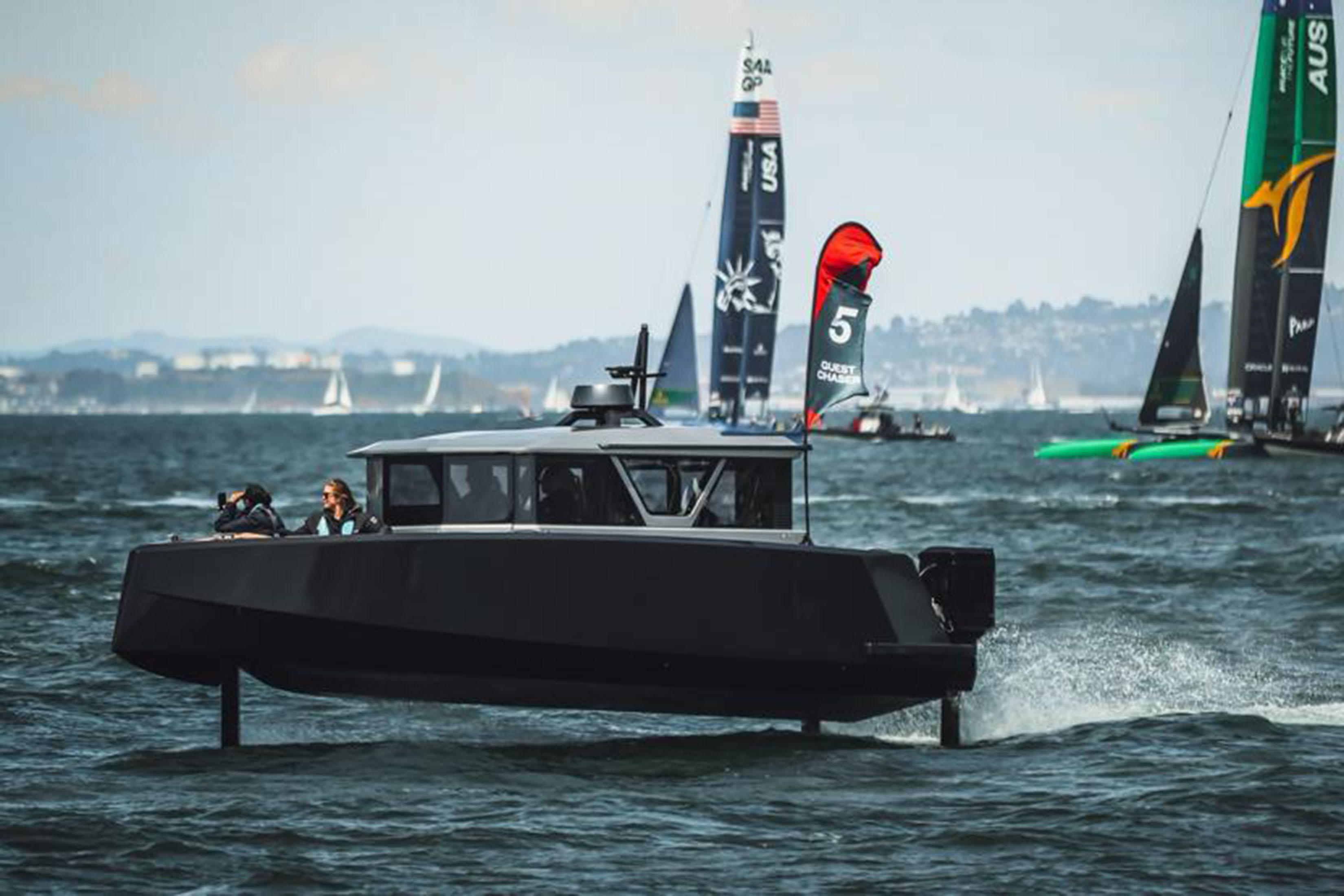“It’s a Boat and a Plane,” Says Maritime Startup Founder
-
-
Slice of MIT
- 1
Filed Under
Recommended

In 2014, when Sampriti Bhattacharyya PhD ’17 was studying for her doctorate at MIT, Malaysia Airlines flight 370 went down in the South China Sea. Stunned that there was no easy way to find the aircraft, she immediately recognized the profound need for technology that could navigate and explore the world’s oceans, “expanding humanity beyond the borders of land.”
Bhattacharyya focused her graduate work on developing a swarm of small ocean robots that could, among other things, search for downed aircraft. She even founded a company, Hydroswarm, to develop the technology—but the startup didn’t pan out. Still, Bhattacharyya remained committed to helping bring to life “a new sustainable ocean economy enabled by building scalable tools and machines.”
So, in 2020, she cofounded a new startup, Navier. A next-generation maritime company headquartered in San Francisco, Navier is marketing “the boat of the future”—a 30-foot electric watercraft that’s 10 times more efficient than a traditional gasoline-fueled boat. Equipped with hydrofoil technology, the ship is also fast—one of Navier’s clean-energy boats can get from Redwood City to Berkeley, California, in just 25 minutes, compared to a 90-minute drive.
I’ve always been interested in solving super hard problems. And that’s what I loved about being at MIT. It inspires you to solve things that matter from a place of purpose.
The vision is grand. Bhattacharyya says the driving idea behind Navier is to transport things on the water at the cost, speed, and convenience of land-borne options, so that “waterways become another highway.”
Going Beyond Expectations
Bhattacharyya’s interest in innovation and exploration developed when she was growing up in Kolkata, India. “Being a scientist was this fascinating thing,” she says. “I like inventing.” But she didn’t have any engineers or inventors in her life. And having attended a small community college, she worried that her professional options were limited, even though she had studied electrical engineering. “The best people expected,” she says, was that she would work at "a pretty low-key job.”

Then, when she was 20, her family purchased its first computer, and Bhattacharyya went to work on the ambitious project of finding an internship in the United States. It was something that her friends who’d gone to top-tier schools in India had done, and she wanted a similar experience. Bhattacharyya wrote more than 500 emails in search of an internship. The negative responses piled up, but Bhattacharyya’s mantra was, “if it’s not against the laws of physics, it’s possible.”
Finally, the Fermilab outside of Chicago took a chance on her. That gave her a foothold in the country, and she was later able to complete her master’s in aerospace engineering at Ohio State. During that time, she interned at NASA, working on an autonomous flight control project in which computer software would take over if there were a wing or rudder failure, say, and safely land the aircraft.
From there, she then applied to MIT for her PhD. She remembers the afternoon that she received her acceptance letter. “When I opened it, I was in tears,” she says. “There were very few people I knew who would even go to America, and literally nobody going to a top school like MIT.”
Bhattacharyya felt right at home at the Institute, pursuing her degree in mechanical engineering and applying her intense focus to her thesis on underwater drones (which she dedicated to her role model, Tony Stark, the fictional inventor behind Ironman in the Marvel Universe).
Computer-Controlled Hydrofoils
MIT also connected Bhattacharyya to some of the people who have worked with her at Navier to develop the company’s eight-passenger boat—including fellow MIT alums Daniel Dorsch ’12, SM ’15, PhD ’19; Kenneth Jensen ’03; Mateo Peña Doll ’14; and Reo Baird ’16, MEng ’18 (her cofounder, no longer with the company). They built the vessel in record speed―in less than a year and a half.
The electric vessel operates like a regular boat until it gets up to speed. That’s when the computer-controlled hydrofoils beneath the vessel kick in and lift it out of the water (similar to how the wings of an aircraft provide lift). It races along with minimal friction—only three stilts are in touch with the sea.
“It’s a boat and a plane,” Bhattacharyya explains. “This is where my previous experience of being both an aerospace engineer and a mechanical and maritime person tie together.” The integration of top-shelf hardware and software leads to a smooth ride with triple the range of a standard electric boat, she says, adding that the craft is the world’s longest-range electric boat and the first all-electric hydrofoil boat made in the United States.
Navier is currently testing prototype vessels in the waters off San Francisco, with plans to expand over the next few years across the United States, Europe, and Asia. Bhattacharyya, the company’s CEO, says the current challenge is how to produce hundreds of these boats affordably. “Business has to abide by two laws,” she says. “The laws of physics and the laws of economics.”
But Bhattacharyya thrives on such challenges. “I’ve always been interested in solving super hard problems,” she says. “And that’s what I loved about being at MIT. It inspires you to solve things that matter from a place of purpose. And if you succeed, they push humanity forward and fundamentally change how we perceive and navigate the world.”
Photos: Courtesy of Navier








Comments
Tim Meyer
Wed, 08/30/2023 11:06pm
Different than Candela?
A Swedish startup (Candela) has a similar idea. How is this different?